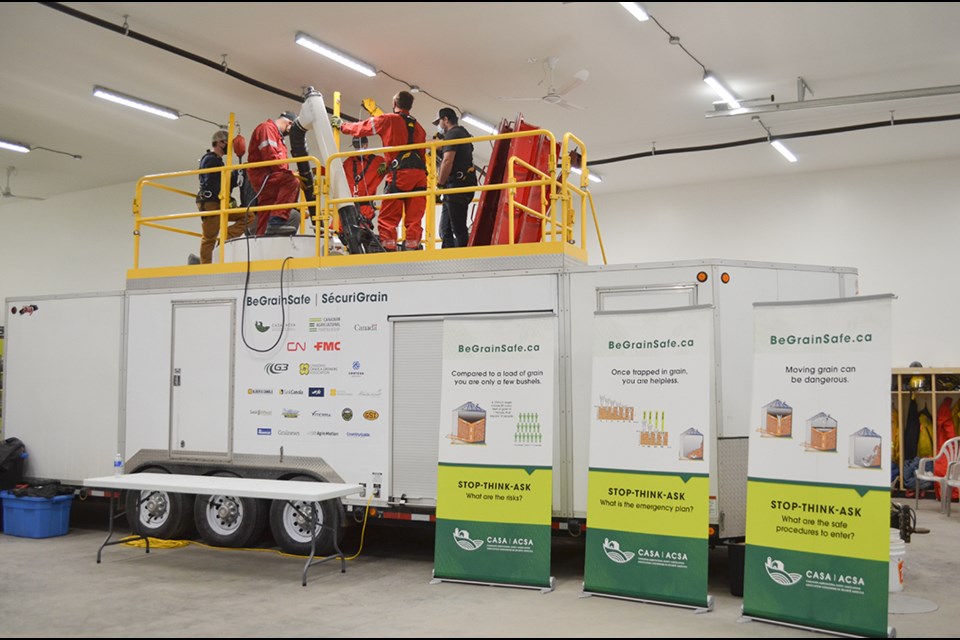The Kipling Fire Department, in partnership with the Canadian Agricultural Safety Association (CASA), participated in a grain entrapment rescue demonstration and training program at the Kipling Fire Hall on Nov. 20 and 21. This provided an excellent opportunity to learn about grain safety from the BeGrainSafe mobile training unit and local firefighters.
Be Grain Safe is a program designed to help save lives. From awareness-raising displays and demonstrations at farm shows to firefighter training and producer education, they reach all ages with their grain safety message: once trapped in grain, you are helpless.
Grain entrapment is extremely dangerous for the victim and the rescuers. Firefighters must use specific safety and rescue procedures to increase their chances of a successful rescue, while keeping members of their department safe. That’s why CASA has developed rescue courses for firefighters.
Firefighters from Kipling, Glenavon and Tribune learned valuable lessons in rescuing a person if ever they were trapped in a grain bin and getting sucked down in the grain. Certified firefighter instructor Tyrone Mogenson, a firefighter with the Melville department for 30 years, was on hand to teach rescue techniques which he has been doing for the past three years.
Due to COVID-19 it was mandatory that all firefighters take a CASA online theory course prior to the hands-on training in a practical setting.
This is not just good for farmers, it’s good for all people to know. Kids beware as well. Don’t go jumping into a grain truck full of grain to have a bit of fun. Danger lurks where you’re least aware.
As well this isn’t pertinent to just grains, it applies to anything you can stack up - fertilizers, gravels, coal, anything. Anything that comes out of an auger or conveyor belt. The same concept is you have to get them out in a safe way. And that’s using panels – GSI RES-Q-Tube. Four panels with ladders on the inside.
“It’s going through the thought process today,” explains Mogenson. “There’s a lot of ‘what if’ scenarios. If you have a process in mind going into a situation it might make it a lot easier as opposed to ‘Holy Smokes’ what do we do now? And who gets called when something goes sideways. It’s always the fire department to the rescue.”
“The main steps today are how we can rescue someone safely,” states Mogenson, “and understand the hazards of the grain itself.”
The unit that the firefighters were trained in was a safe environment and was great for a training prop.
The demonstration was set up with a makeshift six-foot wide by five-foot deep grain bin filled with grain for training purposes. Each participating firefighter was harnessed up prior to experiencing the sinking down to their chest in the grain. Once you’re in that situation and you let a breath out, your next breath in you’ll only be able to take in half a breath. In a very, very short time you could be in a very dangerous situation. So God forbid you sink down to your nose. So imagine if this same scenario happened in a 30-foot bin.
The motto at the end of the day is “Everybody goes home.”
Thanks to the sponsors who helped make firefighter grain rescue training possible – Viterra, Richardson Pioneer, Flatland Plumbing & Heating, Farm Credit Canada and Parrish & Heimbecker.
“It was good and I’m glad I took part in it,” comments Brody Heaton, one of the Kipling firefighters who took the course on Nov. 20.
“It was a lot more restricting than you think it would be,” explains Colby Sproat on his experience of being sucked down into the grain up to his chest. “Once the panels are on around you it’s even more so.”



